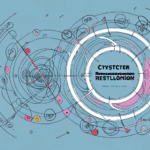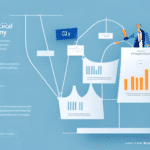Importance of Customer Retention in Ecommerce
In the competitive world of ecommerce, customer retention is a pivotal factor for long-term success. Retaining existing customers is not only more cost-effective than acquiring new ones, but loyal customers also tend to spend more and refer others to your business. According to a Bain & Company report, increasing customer retention rates by just 5% can boost profits by 25% to 95%. This underscores the immense value that retention can bring to your ecommerce operations.
Understanding the Customer Lifecycle
The customer lifecycle encompasses the various stages a customer goes through, from first becoming aware of your brand to becoming a loyal advocate. Typically, it includes the following stages:
- Awareness: Customers become aware of your business and offerings.
- Consideration: They research and compare your products or services.
- Purchase: Customers make a decision to buy from you.
- Retention: Efforts are made to keep them returning for more purchases.
- Advocacy: Loyal customers recommend your business to others.
Understanding these stages allows you to tailor your retention strategies effectively. For instance, addressing drop-offs during the checkout process can enhance the purchase experience and reduce churn.
Key Metrics for Measuring Customer Retention
Monitoring specific metrics is essential to gauge how well your ecommerce business retains customers. Here are the top five metrics you should focus on:
1. Customer Churn Rate
The churn rate measures the percentage of customers who stop doing business with you over a specific period. A high churn rate may indicate issues with customer satisfaction or product quality. Investopedia provides a comprehensive overview of calculating and interpreting churn rates.
2. Repeat Purchase Rate
This metric tracks the percentage of customers who make more than one purchase. A higher repeat purchase rate signifies strong customer loyalty. Businesses can identify popular products and focus on enhancing these offerings to boost retention.
3. Customer Lifetime Value (CLV)
CLV estimates the total revenue a business can expect from a single customer account throughout their relationship. Calculating CLV involves multiplying the average purchase value by the average purchase frequency and the average customer lifespan. Understanding CLV helps in allocating resources effectively to retain high-value customers.
4. Net Promoter Score (NPS)
NPS assesses how likely customers are to recommend your business to others on a scale from -100 to 100. A higher NPS indicates strong customer loyalty and satisfaction. Regularly measuring NPS can help identify areas for improvement in the customer experience.
5. Customer Satisfaction (CSAT)
CSAT measures how satisfied customers are with your products or services, typically through surveys. High CSAT scores are correlated with better retention rates, as satisfied customers are more likely to return and recommend your business.
Strategies for Enhancing Customer Retention
Implementing effective strategies can significantly improve your customer retention rates. Here are some proven methods:
Implementing Loyalty Programs
- Offer rewards that are valuable to your customers, such as discounts or exclusive access.
- Communicate the benefits clearly and regularly.
- Use tiered rewards to incentivize higher levels of engagement.
Personalization and Data-Driven Marketing
Leveraging customer data allows you to tailor marketing efforts to individual preferences. Personalized recommendations and targeted promotions can enhance the shopping experience, making customers feel valued and understood.
Exceptional Customer Support
Providing prompt and effective customer support can resolve issues quickly and enhance customer satisfaction. Implementing tools like live chat or chatbots can improve responsiveness and support quality.
Measuring and Analyzing Customer Retention
It's crucial to analyze retention metrics collectively to gain a comprehensive understanding of customer behavior. For example, a high churn rate coupled with low CSAT might indicate widespread dissatisfaction. Utilizing analytics platforms like Google Analytics or Tableau can help visualize and interpret these metrics effectively.
Case Studies and Real-Life Examples
Examining successful retention strategies can provide actionable insights:
- Retailer X: Implemented a loyalty program that increased repeat purchases by 30% within six months.
- Service Y: Enhanced customer support with a chatbot, resulting in a 10-point increase in NPS.
These examples demonstrate how targeted strategies can lead to significant improvements in customer retention.
Conclusion
Focusing on customer retention is integral to the sustained success of your ecommerce business. By understanding the customer lifecycle, monitoring key retention metrics, and implementing effective strategies, you can build a loyal customer base that drives long-term growth. Incorporating data-driven decisions and continuously refining your approaches will ensure that your business remains competitive and customer-centric.




















